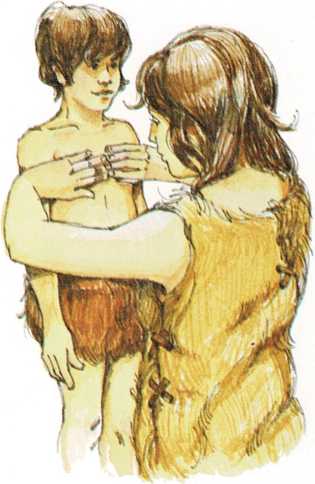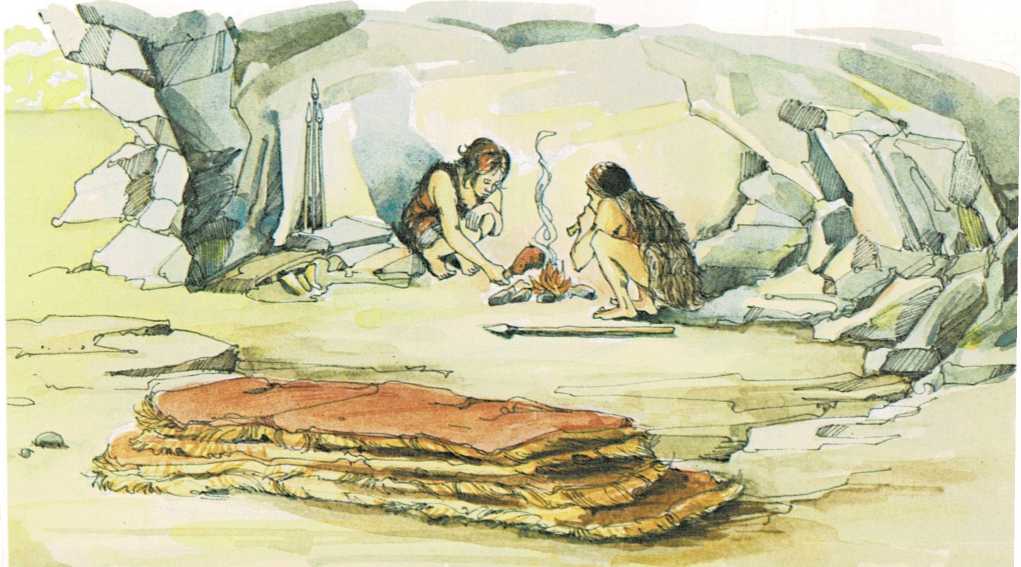Feet and fingers, hands and arms

On a hillside, near the entrance to a cave, a woman sat busily at work.
She wore a dress made of animal skins, and around her neck were strings
of beads made of sea shells and animals’ teeth. The cave was her home,
and the home of her family.
In the woman’s lap were some animal skins. The skins had been carefully
scraped clean and then dried in the sun. She was sewing the skins
together, using a needle that was made of bone and “thread” that was
thin strips of leather. When she was finished, the skins would be a
jacket for her little boy.
To know how big the jacket should be, she had used her hands to measure
the boy and the skins. First, she had found out how many times the
length of her hands, held flat, went around the boy’s chest and back.
Then, after she had measured the skins the same way, she had cut them to
size with a sharp-edged stone knife. Soon, her child would have a snug,
warm jacket for the coming winter.

People were probably measuring things long before they could count. In
fact, measuring may have helped people invent counting. For, when you
measure something, you have to use numbers to tell its size.
People of long ago didn’t have rulers, as we do. They didn’t measure
things by inches or centimeters. Instead, they used parts of the body
for measurement units.
They measured something by seeing how many hands wide it was, or how
many fingers thick. Another unit of measurement was the length of the
forearm, from the elbow to the tip of the middle finger. Still another
was the length of the foot, from the heel to the big toe.
We still measure the height of horses in hands. And we still have a unit
of measurement called a foot.


